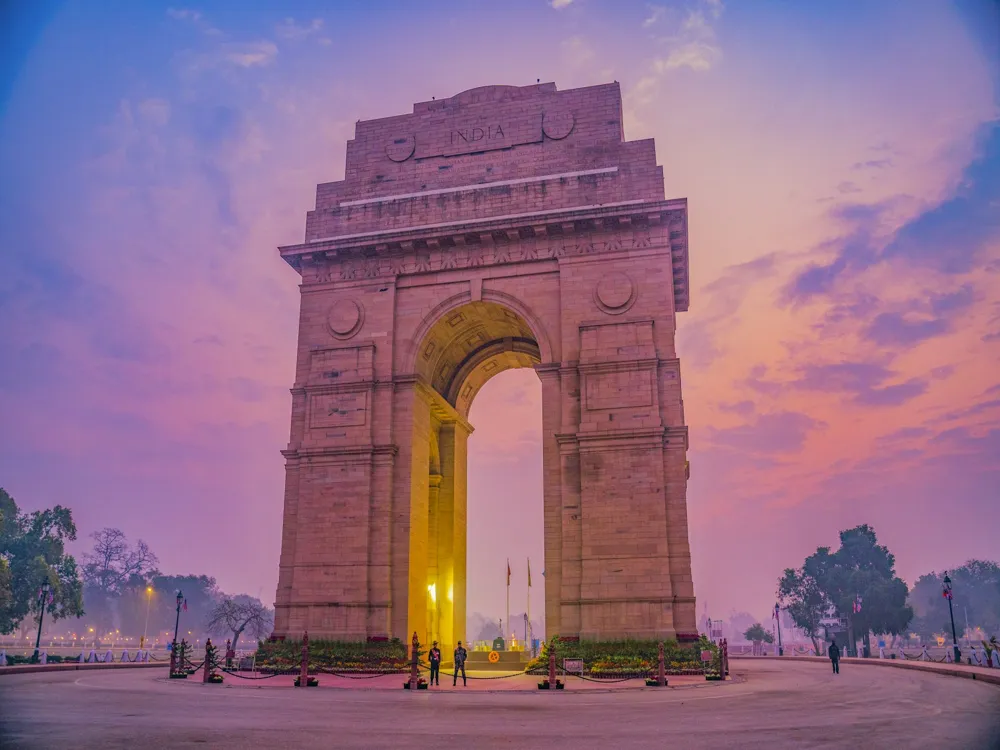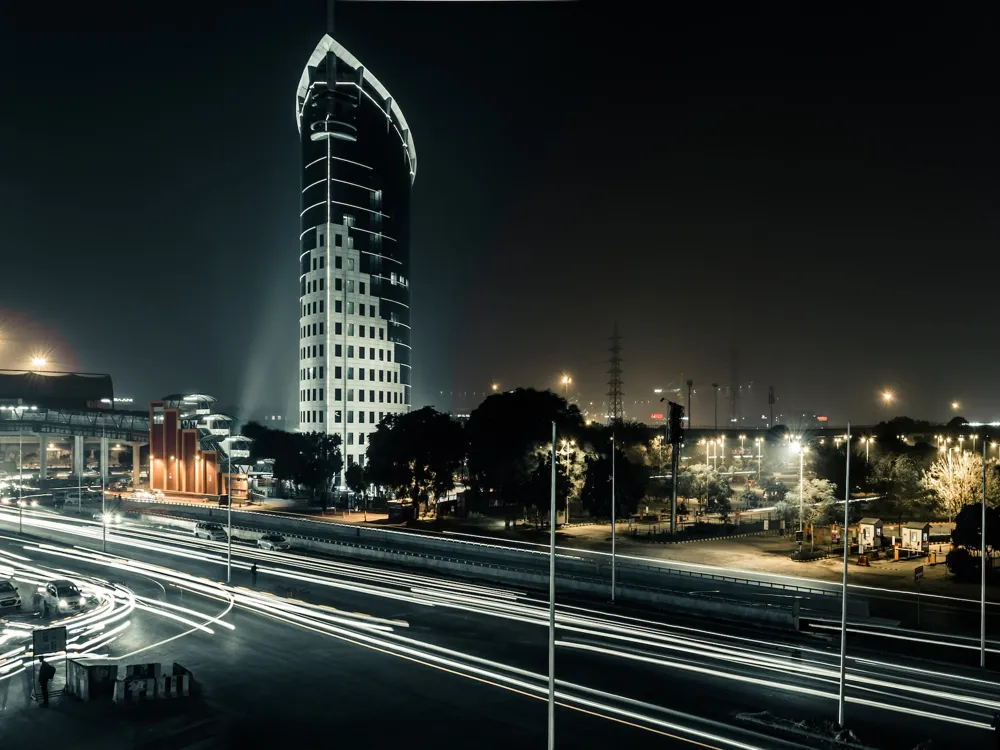Parson Temple, a remarkable architectural marvel, stands as a testament to the rich cultural heritage and artistic brilliance of Faridabad, Haryana. Located in the heart of the city, this temple is not just a place of worship but also a symbol of the harmonious blend of tradition and modernity. Faridabad, known for its industrial prowess, also boasts of this spiritual gem that attracts devotees and tourists alike.
The history of Parson Temple dates back to several decades, encapsulating the spiritual journey and the evolution of religious practices in the region. It is dedicated to a multitude of deities, showcasing the inclusive nature of the Indian religious ethos. The temple's serene ambiance provides a tranquil retreat from the bustling city life, offering a space for reflection and inner peace.
Throughout the year, Parson Temple is a hub of numerous religious ceremonies and festivals. These events are not just significant from a religious standpoint but also serve as a catalyst for social and cultural interactions. The temple's role in community building and social harmony is noteworthy, making it a pivotal landmark in Faridabad.
Moreover, Parson Temple is not just limited to religious activities. It plays a vital role in social welfare through various initiatives like organizing health camps, educational programs, and charitable events. These activities reflect the temple's commitment to societal well-being and its integral role in the fabric of Faridabad's community.
The temple's architecture, which we will delve into in the following sections, is a splendid display of craftsmanship and aesthetics. It stands as a proud representation of the region's artistic legacy, drawing in visitors who are keen to explore its architectural grandeur and spiritual aura.
The architecture of Parson Temple in Faridabad is a magnificent example of Indian craftsmanship blended with modern architectural techniques. The temple's structure is a harmonious mix of traditional Indian styles with contemporary design elements, making it a unique landmark in the region.
At the heart of the temple's architectural beauty is its intricate carvings and detailed sculptures, which depict various deities and mythological scenes. These artworks are not just visually appealing but also carry deep religious significance, narrating stories from ancient scriptures and epics.
The temple's layout follows the ancient Vastu Shastra principles, ensuring a flow of positive energy throughout the premises. The main sanctum, where the deities are housed, is strategically positioned to align with these principles, creating a spiritually uplifting environment for worship.
The use of local materials in the construction of Parson Temple is a testament to the temple's deep connection with its surroundings. The artisans and craftsmen involved in the temple's construction have skillfully incorporated these materials to create a structure that is both durable and aesthetically pleasing.
One of the most striking features of the temple's architecture is its towering spire, which dominates the city's skyline. This spire is not just a visual masterpiece but also serves an important religious function, symbolizing the connection between the earthly realm and the divine.
The temple's interior is equally impressive, with its ornate pillars, vibrant frescoes, and exquisitely designed altars. The meticulous attention to detail in every aspect of the temple's design is evident, creating an ambiance that is both majestic and serene.
Lighting plays a crucial role in the temple's architecture. The strategic placement of windows and the use of reflective surfaces ensure that natural light permeates the entire structure, creating a play of light and shadow that enhances the spiritual atmosphere.
Moreover, the temple's landscaping is thoughtfully designed to complement its architecture. The lush gardens and water features around the temple create a sense of tranquility, offering a perfect setting for meditation and contemplation.
In conclusion, the architecture of Parson Temple is a perfect blend of tradition and innovation, capturing the essence of Faridabad's rich cultural heritage. It stands as a beacon of spiritual and architectural brilliance, attracting visitors from all walks of life.
Visitors to Parson Temple are advised to dress modestly, respecting the temple's religious sanctity. Traditional Indian attire is recommended, but comfortable, non-revealing clothes are also acceptable.
Photography may be restricted in certain areas of the temple. It's advisable to check with the temple authorities before capturing photographs, especially inside the sanctum sanctorum.
The ideal time to visit Parson Temple is during the early morning or late evening hours, when the temple is less crowded. Additionally, visiting during festivals can be a unique experience, though it's more crowded.
Familiarize yourself with the temple's customs, such as removing shoes before entering the temple premises and following the queue system for darshan. Respecting these customs enhances the visit experience.
The temple offers facilities like shoe storage, drinking water, and restrooms. Visitors with special needs may find designated areas for easier accessibility.
Reaching Parson Temple in Faridabad is convenient due to the city's well-connected transportation network. The temple is accessible by various modes of transport, including road and rail.
For those traveling by road, the temple is well-connected through major highways and city roads. Local buses, taxis, and auto-rickshaws are readily available for easy commute within the city.
For visitors coming by train, Faridabad has its own railway station, which is well-connected to major cities in India. From the railway station, one can hire a taxi or take a local bus to reach the temple.
Additionally, for those traveling by air, the nearest airport is in Delhi. From there, one can take a taxi or use public transportation to reach Faridabad, followed by local conveyance to reach the temple.
Overall, reaching Parson Temple is hassle-free, thanks to the well-developed transport infrastructure of Faridabad.
Overview of Parson Temple in Faridabad, Haryana
Architecture of Parson Temple
Tips When Visiting Parson Temple
Dress Code
Photography Guidelines
Best Time to Visit
Local Customs and Etiquette
Facilities Available
How To Reach Parson Temple
Parson Temple
Faridabad
Haryana
NaN onwards
View faridabad Packages
Faridabad Travel Packages
View All Packages For Faridabad
Top Hotel Collections for Faridabad

Private Pool

Luxury Hotels

5-Star Hotels

Pet Friendly
Top Hotels Near Faridabad
Other Top Ranking Places In Faridabad
View All Places To Visit In faridabad
View faridabad Packages
Faridabad Travel Packages
View All Packages For Faridabad
Top Hotel Collections for Faridabad

Private Pool

Luxury Hotels

5-Star Hotels

Pet Friendly





















